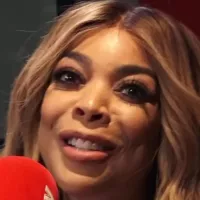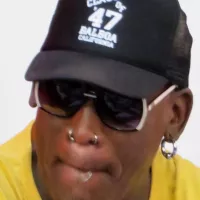How education and upbringing influenced the life of Amelia Earhart. A timeline of key moments.
Amelia Earhart was a groundbreaking American aviation pioneer who vanished over the Pacific Ocean in 1937 during an attempt to circumnavigate the globe. She was the first woman to fly solo non-stop across the Atlantic Ocean and established numerous other aviation records. Beyond her flying achievements, Earhart championed commercial air travel, authored best-selling books detailing her experiences, and played a key role in establishing the Ninety-Nines, an organization for female pilots. Her life and disappearance have made her a lasting cultural icon, symbolizing adventure and women's empowerment.
1904: Construction of a Homemade Roller Coaster
In 1904, with the help of her uncle, Amelia Earhart constructed a home-made ramp that was fashioned after a roller coaster she had seen on a trip to St. Louis, Missouri, and secured it to the roof of the family tool shed. She emerged from her first flight with a bruised lip, a torn dress and a "sensation of exhilaration".
1907: Family Transfer to Des Moines, Iowa
In 1907, Edwin Earhart's job as a claims officer for the Rock Island Railroad led to the family's transfer to Des Moines, Iowa, marking a change in their living environment.
1909: Enrollment in Public School
In 1909, the Earhart children were enrolled in public school for the first time in Des Moines, Iowa. Amelia, at the age of 12, entered seventh grade, marking a significant transition from homeschooling.
1913: Birth of David Binney Putnam
In 1913, David Binney Putnam, the explorer and writer, was born. He was George Palmer Putnam's son from his previous marriage to Dorothy Binney.
1914: Financial Difficulties and Loss of Inheritance
In 1914, Edwin Earhart was forced to retire due to alcoholism, and Amelia's grandmother, Amelia Otis, passed away, leaving a substantial estate in a trust for her daughter to protect it from Edwin's drinking habits. The Otis house was auctioned along with its contents.
1915: Move to St. Paul and Schooling in Chicago
In 1915, Edwin Earhart found work in St. Paul, Minnesota, and Amelia entered Central High School. Later, Amy Earhart took her children to Chicago, where Amelia enrolled in Hyde Park High School after carefully selecting it for its superior science program.
1916: Graduation from Hyde Park High School
In 1916, Amelia Earhart graduated from Hyde Park High School. Throughout her childhood, she aspired to a career and kept a scrapbook of newspaper clippings about successful women in male-dominated fields.
1917: Service as a Nurse's Aide
During Christmas vacation in 1917, Amelia Earhart visited her sister in Toronto, Canada, and witnessed wounded soldiers returning from World War I. She trained as a nurse's aide with the Red Cross and worked at Spadina Military Hospital, where she developed an interest in flying after hearing stories from military pilots.
December 1918: Discharge from Hospital after Spanish Flu
In December 1918, Amelia Earhart was discharged from Spadina Military Hospital, about two months after contracting the 1918 Spanish flu and being hospitalized for pneumonia and maxillary sinusitis.
1919: Enrollment at Smith College and Columbia University
In 1919, Amelia Earhart prepared to enter Smith College but changed her plans and enrolled in medical studies and other programs at Columbia University.
December 28, 1920: Attended Aerial Meet
On December 28, 1920, Amelia Earhart and her father attended an "aerial meet" at Daugherty Field in Long Beach, California, where she inquired about passenger flights and flying lessons.
January 3, 1921: First Flying Lesson
On January 3, 1921, Amelia Earhart had her first flying lesson at Kinner Field with Neta Snook. To afford the lessons, she worked various jobs and saved $1,000.
1921: Birth of George Palmer Putnam Jr.
In 1921, George Palmer Putnam Jr. was born. He was George Palmer Putnam's son from his previous marriage to Dorothy Binney.
October 22, 1922: World Record for Female Pilots
On October 22, 1922, Amelia Earhart flew her Airster to an altitude of 14,000 feet, setting a world record for female pilots, showcasing her skill and determination in aviation.
May 16, 1923: Pilot's License Issued
On May 16, 1923, Amelia Earhart became the 16th woman in the United States to be issued a pilot's license (#6017) by the Fédération Aéronautique Internationale (FAI), marking a significant milestone in her aviation career.
1924: Hospitalization for Sinus Operation and Other Ventures
In 1924, Amelia Earhart was hospitalized for another unsuccessful sinus operation due to her worsening sinus problem. During this time, she also tried setting up a photography company and other ventures.
1924: Transcontinental Trip with Mother
In 1924, following her parents' divorce, Amelia Earhart drove her mother in her "Yellow Peril" on a transcontinental trip from California, with stops throughout the western United States and northward to Banff, Alberta, Canada.
1925: Employment as a Teacher and Social Worker
In 1925, Amelia Earhart found employment as a teacher and later as a social worker at Denison House, a Boston settlement house, while living in Medford, Massachusetts.
1927: First Official Flight out of Dennison Airport
In 1927, Amelia Earhart flew the first official flight out of Dennison Airport in Quincy, Massachusetts, and also worked as a sales representative for Kinner Aircraft in the Boston area.
1927: Inspired by Charles Lindbergh's Flight
In 1927, Charles Lindbergh's successful solo transatlantic flight inspired American heiress Amy Phipps Guest to want to become the first woman to cross the Atlantic by air.
March 1928: Amy Phipps Guest's Aviation Team Assembly
In March 1928, Amy Phipps Guest assembled a team of aviation professionals, including pilot Wilmer Stultz, to support her endeavor to become the first woman to cross the Atlantic by air.
April 1928: Putnam's Quest to Find the "Right Sort of Girl"
In April 1928, George Palmer Putnam learned of Amy Guest's planned transatlantic attempt and, with Hilton Railey, took on the task of finding the "right sort of girl" for the flight, leading them to Amelia Earhart.
June 3, 1928: Friendship's Transatlantic Journey Begins
On June 3, 1928, after several unsuccessful attempts, the Friendship, with adjustments to reduce weight and the departure of Lou Gower, successfully took off from East Boston to begin its transatlantic journey to Trepassey, Newfoundland.
June 1928: Departure from Burry Port Harbour
In June 1928, Friendship departed Burry Port Harbour beginning the final leg of its journey to Southampton. A potentially historic meeting between Amelia Earhart and Sir Arthur Whitten Brown, who had completed the first non-stop transatlantic flight, was narrowly missed due to a miscommunication during departure.
July 6, 1928: Ticker-Tape Parade in New York City
On July 6, 1928, Amelia Earhart and the crew of Friendship were honored with a ticker-tape parade along the Canyon of Heroes in New York City to celebrate the first successful transatlantic flight by a woman.
August 1928: Solo Flight Across North America
In August 1928, Amelia Earhart became the first woman to fly solo across the North American continent and back.
November 23, 1928: Broken Engagement with Samuel Chapman
On November 23, 1928, Amelia Earhart broke off her engagement with Samuel Chapman, a chemical engineer from Boston.
1928: Lecture Tour and Endorsements
Immediately after her return to the United States in 1928, Amelia Earhart undertook an exhausting lecture tour and accepted media endorsements for products, including luggage.
1928: First female passenger to cross the Atlantic by airplane
In 1928, Amelia Earhart became the first female passenger to cross the Atlantic by airplane, gaining celebrity status following this event.
1929: Heavy Promotion and Lucky Strike Deal
In 1929, George Putnam heavily promoted Amelia Earhart, which included publishing a book she wrote, organizing a series of new lecture tours, and using her pictures in media endorsements. Earhart accepted a Lucky Strike cigarettes endorsement deal to support Richard Evelyn Byrd's imminent expedition to the South Pole.
1929: Putnam's Divorce
In 1929, George Putnam, known as GP, was divorced and started pursuing Amelia Earhart, proposing to her six times before she agreed to marry him.
1929: Meeting of Female Pilots
In 1929, following the Women's Air Derby, Amelia Earhart called a meeting of female pilots to form an organization. She suggested the name Ninety-Nines, based on the number of charter members.
February 7, 1931: Marriage to George P. Putnam
On February 7, 1931, Amelia Earhart married her public relations manager George P. Putnam in a marriage of convenience at Putnam's mother's house in Noank, Connecticut.
1932: Preparing for Solo Transatlantic Flight
By 1932 Amelia Earhart's visibility in the media helped redefine public perceptions of women in aviation and paved the way for her subsequent solo transatlantic flight.
1932: First woman to make a nonstop solo transatlantic flight
In 1932, Amelia Earhart achieved the milestone of becoming the first woman to make a nonstop solo transatlantic flight, for which she was awarded the Distinguished Flying Cross.
November 1934: Fire at the Putnam Residence
In November 1934, while Amelia Earhart was away on a speaking tour, a fire occurred at the Putnam residence in Rye, destroying many family treasures and personal mementos. Following the fire, the couple decided to move to the west coast.
1934: Refusal to Participate in Bendix Trophy Race
In 1934, after the Bendix Trophy Race banned women from competing, Amelia Earhart refused to fly screen actor Mary Pickford to Cleveland to open the race.
June 1935: Putnam Purchases a House in Toluca Lake
In June 1935, at Amelia Earhart's urging, George Putnam purchased a small house in Toluca Lake, a celebrity enclave between the Warner Brothers and Universal Pictures studio complexes.
September 1935: Establishment of Earhart-Mantz Flying School
In September 1935, Amelia Earhart and Paul Mantz established the Earhart-Mantz Flying School, controlled by Mantz. Also in September 1935, Earhart joined Purdue University as a visiting faculty member and technical advisor.
1935: Recognizing the limitations of the Lockheed Vega
By 1935, Amelia Earhart recognized the limitations of her Lockheed Vega for long, transoceanic flights and started contemplating a circumnavigation of the globe and would need a new aircraft.
1935: Visiting faculty member of Purdue University
In 1935, Amelia Earhart joined Purdue University as a visiting faculty member. She served as an advisor in aeronautical engineering and as a career counselor to female students, contributing to education and women's causes.
1936: Planning to Fly Around the World
Early in 1936, Amelia Earhart started planning a 29,000-mile flight around the world along an equatorial route, with the intention of being the first woman to do so. She intended to generate publicity for a planned book about the expedition.
July 2, 1937: Disappearance over the Pacific Ocean
On July 2, 1937, Amelia Earhart disappeared over the Pacific Ocean while attempting to become the first female pilot to circumnavigate the world. This event marked the beginning of the mystery surrounding her fate.
1937: Attempt to Circumnavigate the Globe and Disappearance
In 1937, Amelia Earhart, accompanied by her navigator Fred Noonan, disappeared near Howland Island in the central Pacific Ocean while attempting to become the first woman to complete a circumnavigational flight of the globe. They were flying a Lockheed Model 10-E Electra airplane, and were last seen in Lae, New Guinea.
January 5, 1939: Declared Dead
On January 5, 1939, Amelia Earhart was officially declared dead, approximately one year and six months after her disappearance over the Pacific Ocean. This declaration formally concluded the search efforts, though the circumstances of her disappearance remained unresolved.
Mentioned in this timeline

Hillary Diane Rodham Clinton is an American politician lawyer and...
California is a U S state on the Pacific Coast...

Christmas is an annual festival celebrated on December th commemorating...
Africa is the second-largest and second-most populous continent comprising of...
Connecticut is a state in the New England region of...

Los Angeles is the most populous city in California and...
Trending
7 months ago Severe Thunderstorms Expected in Alabama: High Winds and Heavy Rainfall Possible

2 months ago HBO's 'Welcome to Derry': Stephen King Prequel, Pennywise Haunts, Questions Arise About Ruining Masterpiece
2 months ago Sleep Token Accused of IG Shutdown Over Tattoo Copyright: Artist Claims Label Involved

29 days ago Dolly de Leon eyes 'Heidi Fleiss' role, joining Aubrey Plaza in Hollywood.

7 months ago Wendy Williams' documentary 'Trapped' explores her health struggles and guardianship battle: Trailer released.

12 days ago Dennis Rodman: NBA's First Real Entertainer and Rebounding Machine, according to BJ Armstrong.
Popular

Candace Owens is an American conservative political commentator and author...
Matt and Ross Duffer known as the Duffer Brothers are...

Ilhan Omar is an American politician currently serving as the...

XXXTentacion born Jahseh Dwayne Ricardo Onfroy was a controversial yet...

Tom Cotton is an American politician and Army veteran currently...
The Kennedy Center Honors are annual awards recognizing individuals and...
